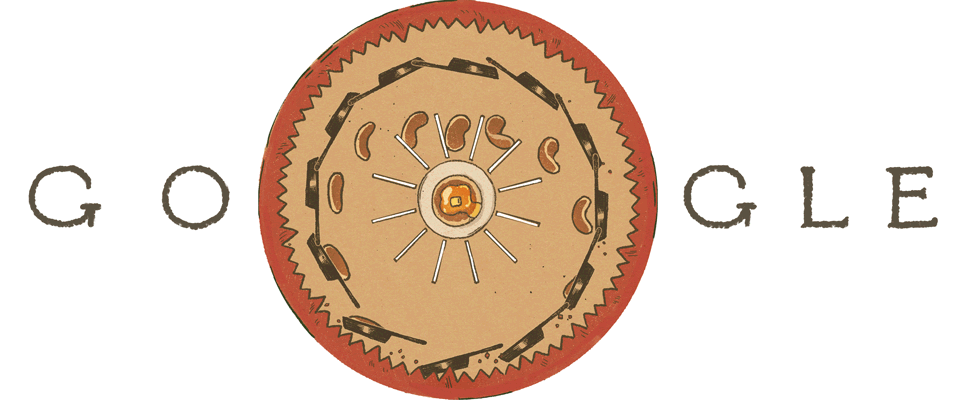
Oct 14, 2019
Joseph Plateau’s 218th Birthday
This Doodle’s Key Themes
Today’s Doodle celebrates the Belgian physicist Joseph Antoine Ferdinand Plateau, whose research on visual perception inspired him to invent a device he called the phénakistiscope, which led to the birth of cinema by creating the illusion of a moving image. Inspired by the mesmerizing animated discs, the animated Doodle art was made to reflect Plateau’s style, with different imagery and themes in them on different device platforms.
Born in Brussels on this day in 1801, Plateau was the son of an accomplished artist who specialized in painting flowers. After studying law, young Plateau became one of the best-known Belgian scientists of the nineteenth century, remembered for his study of physiological optics, particularly the effect of light and color on the human retina.
Plateau’s doctoral dissertation detailed how images form on the retina, noting their exact duration, color, and intensity. Based on these conclusions, he was able to create a stroboscopic device in 1832, fitted with two discs that rotated in opposite directions. One disc was filled with small windows, evenly spaced in a circle, while the other had a series of pictures of a dancer. When both discs turned at exactly the right speed, the images seemed to merge, creating the illusion of a dancer in motion.
Though Plateau lost his vision later in life, he continued to have a productive career in science even after becoming blind, working as a professor of experimental physics at Ghent University with the help of colleagues that included his son Felix Plateau and his son-in-law Gustaaf Van der Mensbrugghe.
Happy Birthday, Joseph Plateau!
Doodler Up Close
Today's Doodle was created by animator, filmmaker, and Doodler Olivia When with inspiration and help from Diana Tran and Tom Tabanao. Below are her thoughts on the making of the Doodle:
Q: Joseph Plateau was a remarkable scientist whose invention changed the world. What part of his story do you find most inspiring personally?
A: I enjoy Plateau’s broad range of interests. I think it’s a good message to show that you can be interested in lots of things, like science, math, art, invention, craft, and that they can overlap.
Q: What was your creative approach for this Doodle, and how did you choose that approach?
A: I spent a lot of time looking through phénakistiscope plates to see how they worked, and what type of actions worked best for that space. The blue disk specifically references his work in physics, specifically his laws around soap films, and how the structure of bubbles is mathematical.
Q: At what point in your life did you know that you loved the visual arts? Was there a particular artist or teacher who inspired you to develop your talents?
A: I’ve liked drawing for about as long as I can remember. I’ve been lucky to have always been surrounded by family, friends, and teachers who told me my drawings were very good, even when I was just drawing wobbly cartoons.
Q: Do you have any technical tips or tricks to share with up-and-coming artists/illustrators?
A: Be comfortable being a little confused. There were a lot of things I learned about this style of animation while doing it. For instance, in this type of animation, all the frames have to be visible so that it creates the illusion of motion when it spins.
Q: What do you hope people will take away from this Doodle?
A: I hope people will feel interested in the long history of animation and film! Also, maybe people will try animating if they’re interested. The animations in this Doodle were all only 12 drawings each.
Early animation tests for the Doodle
This is the first Google Doodle with different artwork showing up across different device surfaces—desktop, mobile, and the Google App.
Where this Doodle appeared
Discover more Doodles by color
Did you know?
The very first Doodle launched as an “out of office” message of sorts when company founders Larry and Sergey went on vacation.
Learn MoreDid you know?
The first Doodle launched in 1998, before Google was officially incorporated.
Learn MoreDid you know?
The first same day Doodle was created in 2009 when water was discovered on the moon.
Learn MoreDid you know?
Doodle for Google student contest winners have gone on to become professional artists
Learn MoreDid you know?
The time it takes from sketch to launch for a Doodle varies widely: some have taken years and others just a few hours!
Learn MoreDid you know?
Hundreds of Doodles launch around the world every year. Often, several different ones are live in different places at the same time!
Learn MoreDid you know?
Our most frequently recurring Doodle character is Momo the Cat - named after a real-life team pet!
Learn More